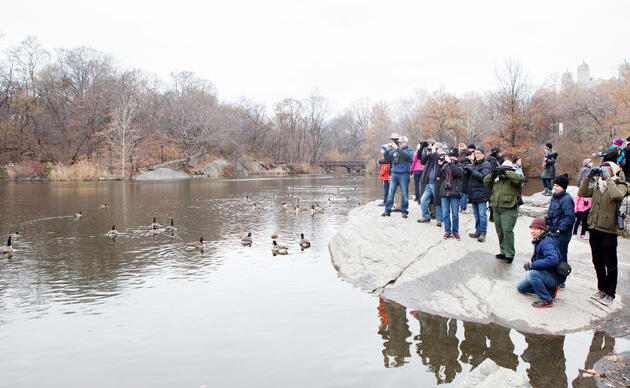Rainwater Basin
Site Description: The Rainwater Basin area covers approximately 25,000 square miles extending over 17 southcentral counties, divided into eastern and western sections. Snowmelt and spring rains fill shallow, impermeable basins creating wetlands that number in the hundreds. There are nearly 100 publicly-owned areas open to birders.
Ornithological Summary: The Rainwater Basin is the narrowest portion of the migration route known as the Central Flyway. From mid-February to mid-March, millions of waterfowl will use the wetlands and uplands for resting, feeding, and pair bond formation. The numbers are a birder’s dream: three to six million Snow Geese, four million Mallards (50 percent of the mid-continent population), 900,000 White-fronted Geese (90 percent), 900,000 Pintails (30 percent), plus millions of other migrating birds.
The current bird list of the RWB stands at 337 species. Shorebirds account for 39 of these species, the star of which being perhaps the Buff-breasted Sandpiper. Limited but regular survey data indicate the eastern RWB attracts almost 2 percent of the world’s population of Buff-breasted Sandpipers, making the area the one of the prime stopover sites in North America for the species.
More than 40 percent of Nebraska’s Whooping Crane sightings have been here, and, in the fall, more use-days for the species have been recorded than in any other area in the U.S. Other notable species to see include Greater Prairie-Chicken, Bobolink, Short-eared Owl, and nesting Sandhill Cranes.
Links:
http://www.rwbjv.org/
http://rainwater.fws.gov/
For more information, call or write Kevin Poague, Important Bird Areas Coordinator, Audubon Nebraska, P.O. Box 117, 11700 SW 100th Street, Denton, NE 68339 402-797-2301, Fax: 402-797-2304.
How you can help, right now
Support Rowe Sanctuary
Help us continue our important work for Sandhill Cranes and other birds that rely on the Platte River ecosystem!
Support Spring Creek Prairie
We are able to provide and protect this amazing landscape only with the help of private donations. Help us keep the trails open and the prairie thriving!
Support Audubon in the Great Plains
Support our work with local landowners, urban woods and prairies, and education programs in Nebraska and the Dakotas!




